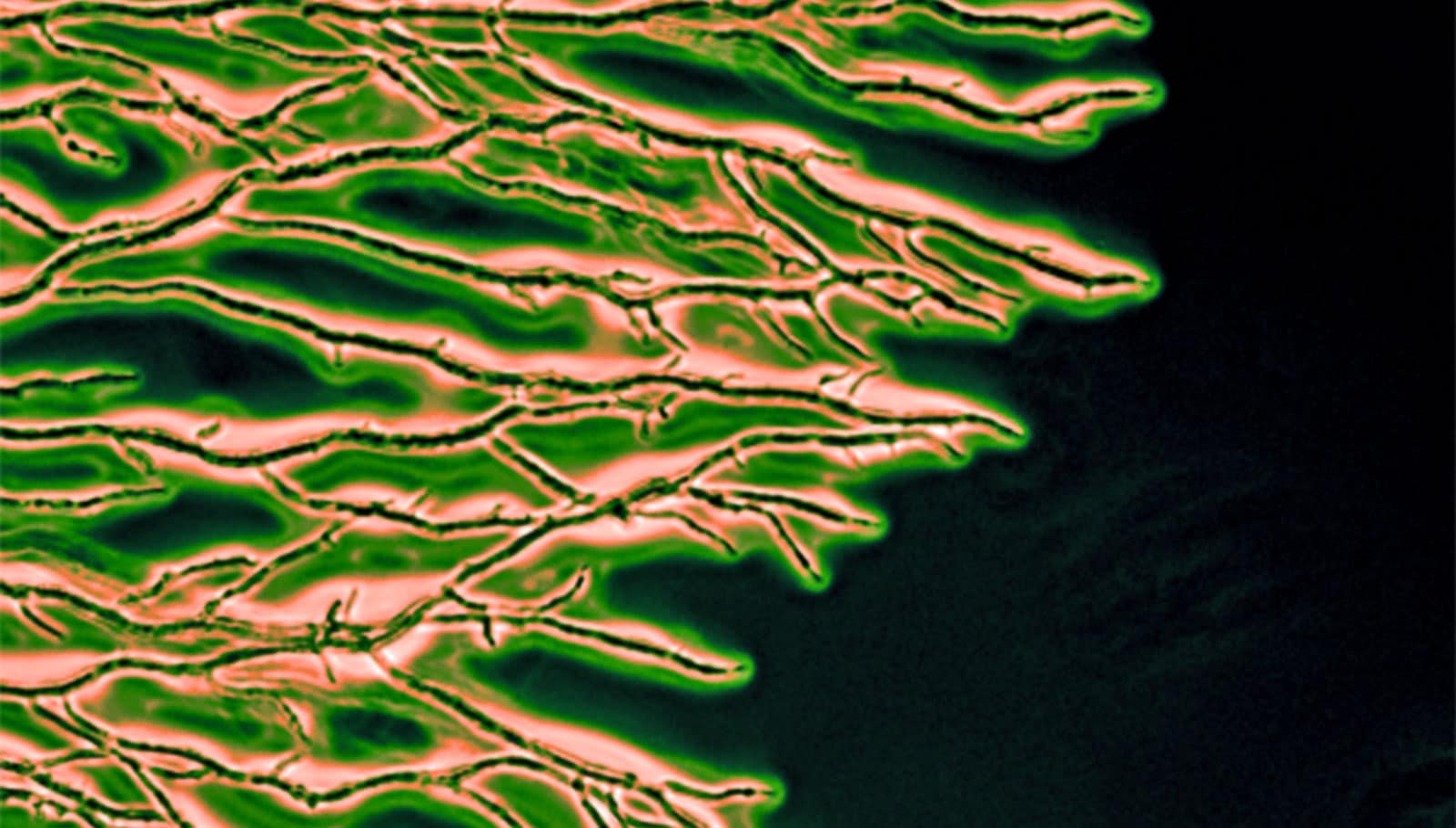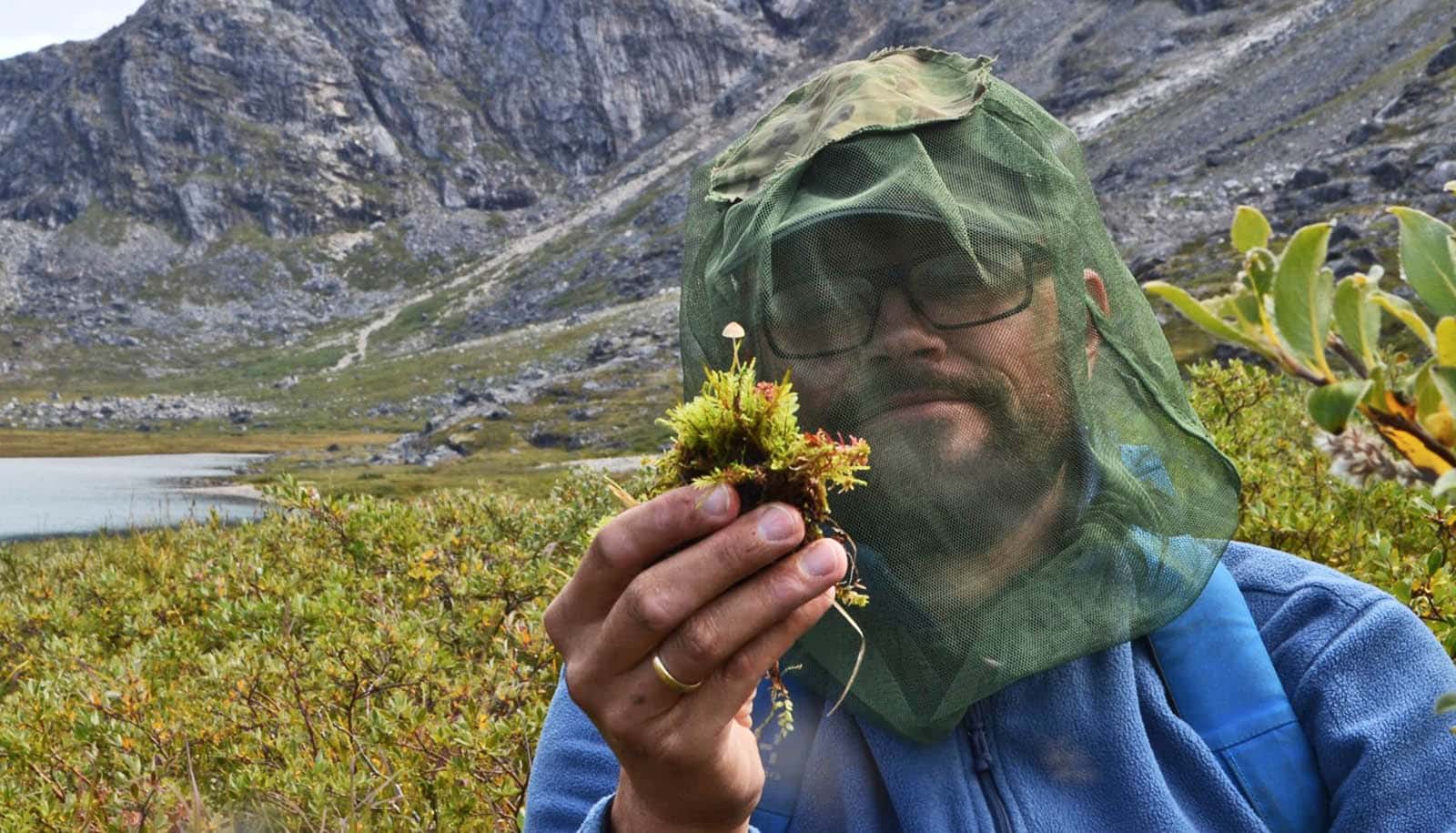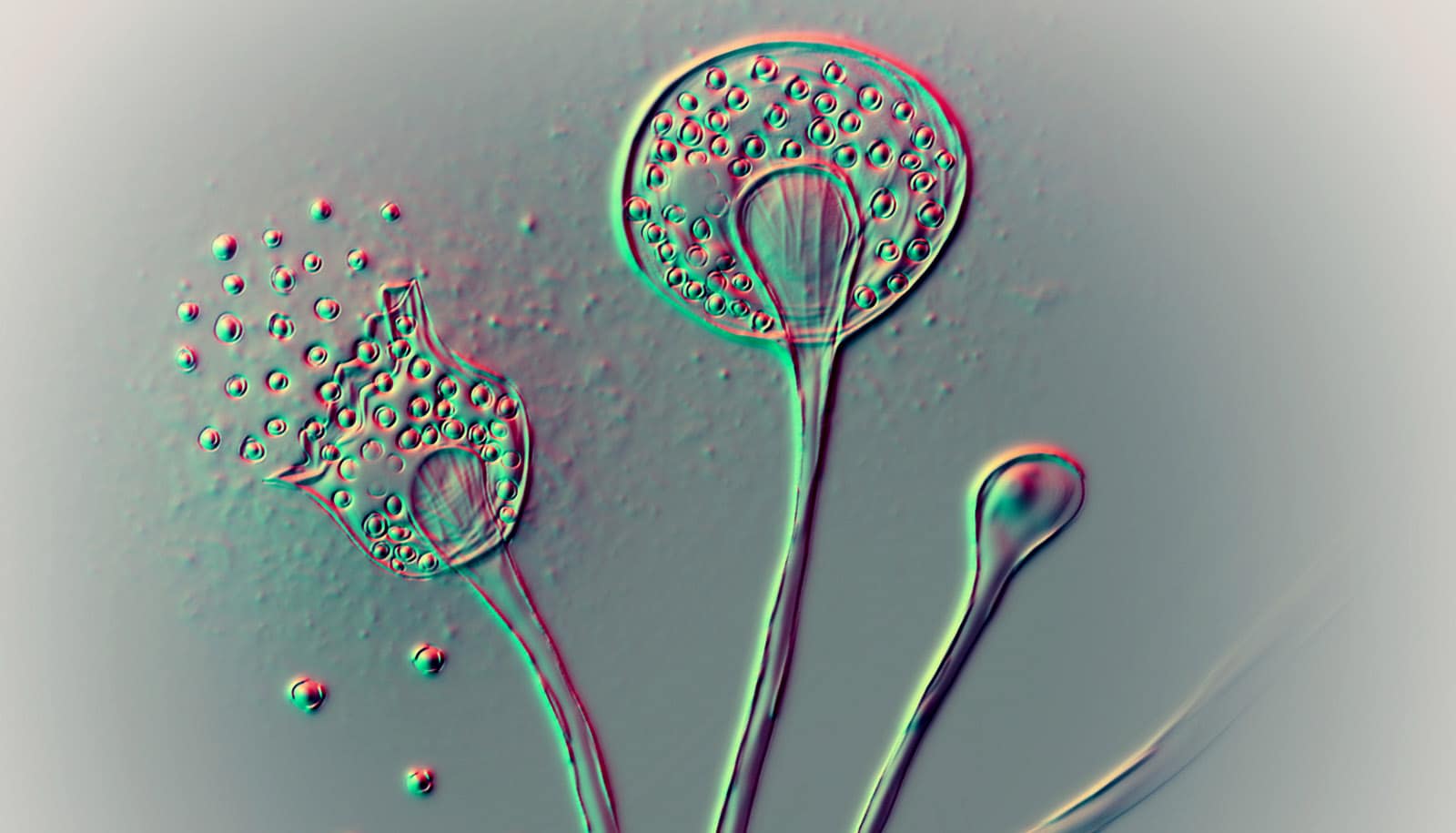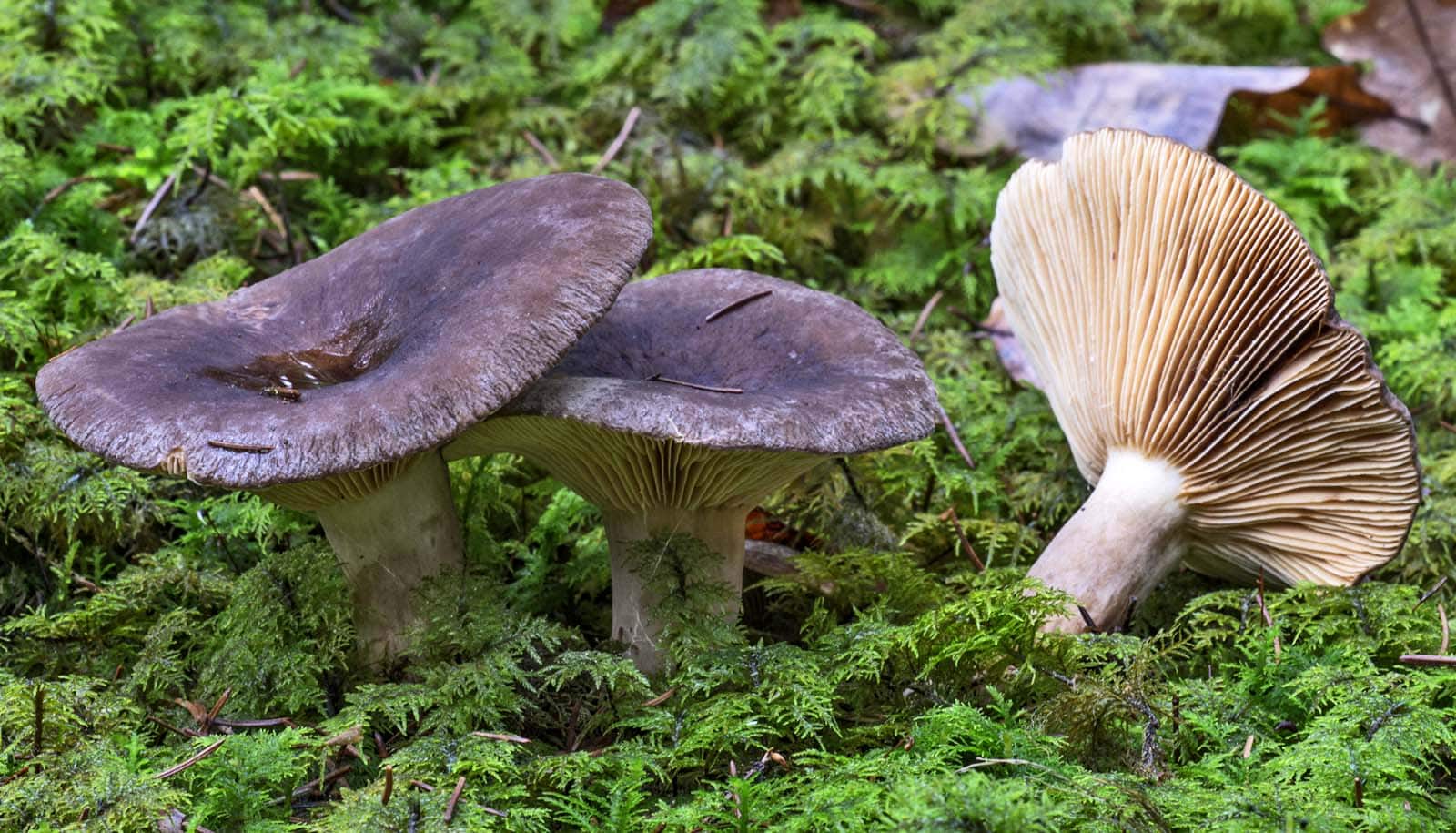Scientists have found a “tipping point” in the evolution of fungi that throttles their growth and sculpts their shapes.
The findings, published in the journal Cell Reports, demonstrate how small changes in environmental factors can lead to huge changes in evolutionary outcomes.
Fungi are nature’s great composters. They wait within the forest floor to feed on fallen trees and autumn leaves, releasing essential nutrients from these plants back into the Earth.
Although fungi often bring to mind mushroom caps, fungi also have underground “roots” called mycelia. Mycelia are made up of thousands of interconnected, microscopic, finger-like cells called hyphae that grow into vast networks. Hyphae worm their way through the soil by growing from their tips. To do so, they inflate themselves, similar to the long balloons used to make balloon animals.
Hyphae of the fungus Allomyces arbuscula growing as part of a mycelium. (Credit: Maxim Ohairwe)
Their elongated forms allow hyphae to locate and consume nutrients within the soil. But not all hyphae are the same shape: some have rounded tips, while others are pointed. The hyphae of water molds—fungus-like pathogens that cause blight in crops—are particularly pointy.
“A major challenge in biology is to identify the specific evolutionary factors that determine the shape—or form—of a given organism,” says Enrique Rojas, assistant professor of biology at New York University and the study’s senior author.
To understand the reasons for different shapes of hyphae, Rojas and his colleagues combined theory and experiments to investigate fungi and water molds from across nature. They first used physics-based models of inflationary tip growth to determine all possible shapes of hyphae. Surprisingly, the shapes of actual hyphae found in nature assumed only a small subset of the possible shapes.
The researchers hypothesized that the limited shapes observed in nature reflected “survival of the fittest,” and that the many possible shapes not observed in real fungi were, for some reason, weaker evolutionary rejects. To explore this idea, they examined the growth rate of hyphae with different shapes to create a fitness landscape for hyphae.
An Achlya bisexualis hypha growing. (Credit: Maxim Ohairwe)
“Our eureka moment was when we realized that the shapes of hyphae were intimately connected to their ability to grow fast,” says lead author Maxim Ohairwe, a PhD student in the biology department.
A fitness landscape is like a topographic map that visualizes the evolution of an organism: every species wanders through its fitness landscape by testing whether or not random mutations in its genes increase its growth rate, or fitness. A species only stops its restless wandering when a new mutation decreases its fitness—that is, when it is at a fitness peak.
However, Rojas’s team found that fitness landscapes can be much more rich than a system of peaks and valleys. In fact, they found that the fitness landscape for hyphae contained an overhanging cliff, or tipping point, and that this acts as a barrier to evolution, strongly limiting the shapes of fungal hyphae.
Accordingly, they predicted that hyphae with shapes near the brink of the tipping point would be particularly vulnerable to small environmental, chemical, or genetic changes.
The researchers tested their prediction by treating fungi near the tipping point with small amounts of chemicals that affected hyphal growth. They used one chemical that reduces pressure within the hyphae and another derived from a sea sponge that blocks the hypha’s ability to deliver cellular components to the tip of the cell. Both treatments caused the same dramatic effect: the hyphae elongated much more slowly and with a strange nub shape not found in nature.
“Our findings explain hyphal shape diversity in an enormous, diverse, and important group of species,” says Rojas. “More broadly, they also demonstrate an important new evolutionary principle: that fitness landscapes can have instabilities, or tipping points, that impose strict constraints on complex traits, like biological form.”
The researchers believe that their results have critical implications for our understanding of many ecological and evolutionary systems.
For example, those species whose evolution is subject to a tipping point may be the most vulnerable to the gradual increase in temperature caused by climate change. Their findings could also aid in the development of new antimicrobials against disease-causing fungi by identifying vulnerabilities in their growth associated with an evolutionary tipping point.
Branka Živanović of the University of Belgrade is a study coauthor.
The National Science Foundation, the Ministry of Education, Science and Technological Development of the Republic of Serbia, and Deutsche Forschungsgemeinschaft funded the work. The NYU Microscopy Laboratory, where electron microscopy was performed, is funded by the National Institutes of Health.
Source: NYU



